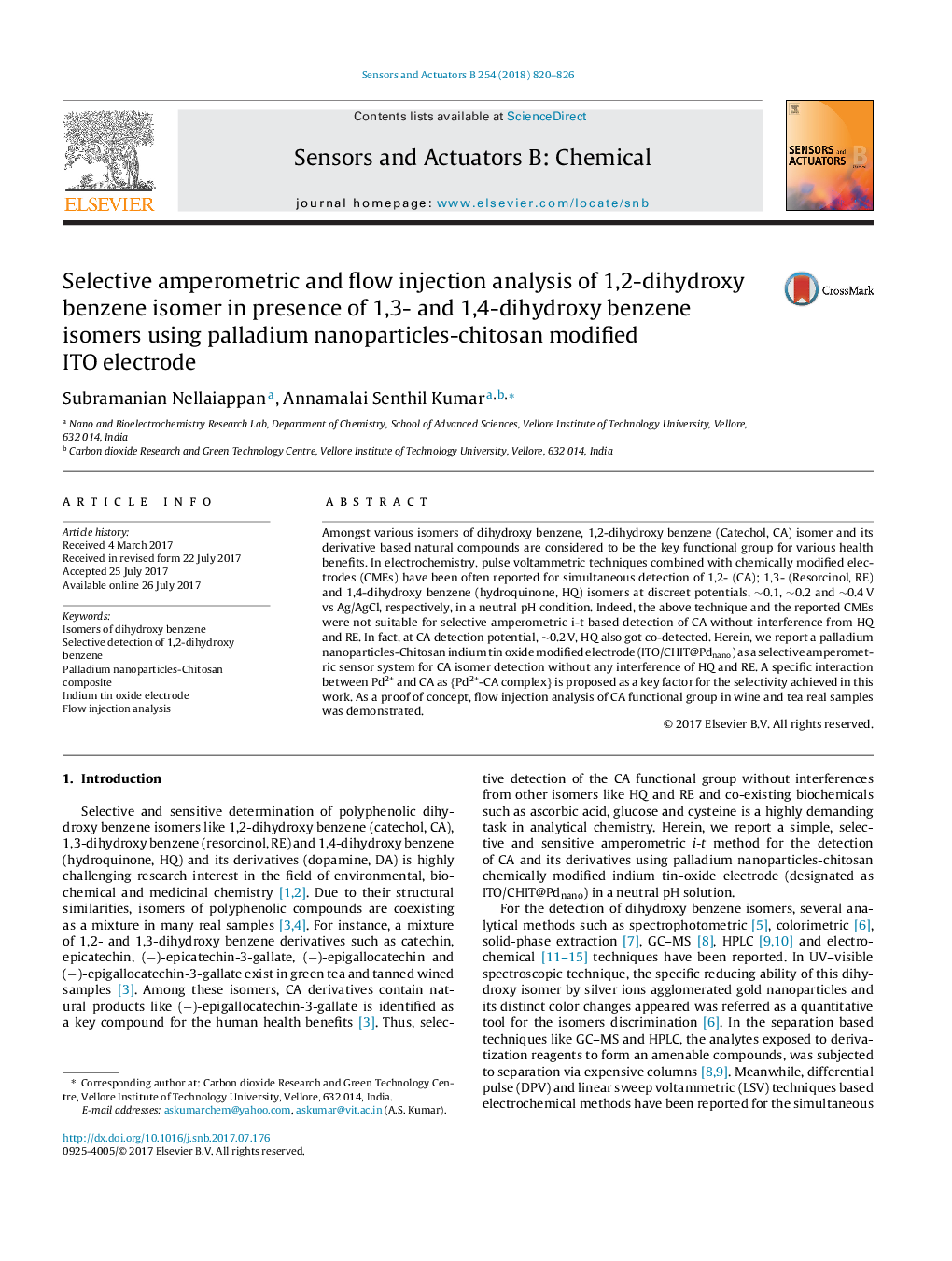| Article ID | Journal | Published Year | Pages | File Type |
|---|---|---|---|---|
| 5008740 | Sensors and Actuators B: Chemical | 2018 | 7 Pages |
â¢Chitosan-Palladium nanoparticle modified ITO electrode was developed.â¢Selective amperometric detection of catechol in presence of resorcinol and hydroquinone shown.â¢Specific interaction of {Pd-CA} complex is proposed as a key step for the selectivity.â¢A homemade flow injection analysis system coupled electrochemical detector was introduced.â¢Tea and wine samples were analyzed.
Amongst various isomers of dihydroxy benzene, 1,2-dihydroxy benzene (Catechol, CA) isomer and its derivative based natural compounds are considered to be the key functional group for various health benefits. In electrochemistry, pulse voltammetric techniques combined with chemically modified electrodes (CMEs) have been often reported for simultaneous detection of 1,2- (CA); 1,3- (Resorcinol, RE) and 1,4-dihydroxy benzene (hydroquinone, HQ) isomers at discreet potentials, â¼0.1, â¼0.2 and â¼0.4Â V vs Ag/AgCl, respectively, in a neutral pH condition. Indeed, the above technique and the reported CMEs were not suitable for selective amperometric i-t based detection of CA without interference from HQ and RE. In fact, at CA detection potential, â¼0.2Â V, HQ also got co-detected. Herein, we report a palladium nanoparticles-Chitosan indium tin oxide modified electrode (ITO/CHIT@Pdnano) as a selective amperometric sensor system for CA isomer detection without any interference of HQ and RE. A specific interaction between Pd2+ and CA as {Pd2+-CA complex} is proposed as a key factor for the selectivity achieved in this work. As a proof of concept, flow injection analysis of CA functional group in wine and tea real samples was demonstrated.
Graphical abstractDownload high-res image (208KB)Download full-size image
